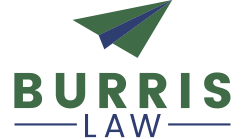When it comes to inventorship in the United States, too often there seems to be an overly generous – even ceremonial –approach to naming inventors.
- “He was such a nice manager and encouraged me all the way!” or
- “She did a great job testing all of my prototypes and providing thorough test data” or
- “He did a great job reviewing my invention disclosure and asking questions about how the invention operates” or
- “She uses the Force for knowledge and defense, never for attack.”…just kidding on that last one.
Unfortunately, if the proper legal inventors are not named, there can be grave and significant financial impact on a company to the extent that a patent could be invalidated or undergo a change in ownership to a rival company.
Inventorship is a fluid situation, changing as a function of the language of the claimsof a patent. Let’s take a closer look at the legal requirements for inventorship in the United States and best practices that businesses can follow to properly name their inventors.
CONCEPTION
The first consideration for inventorship is who conceived the invention. While determining conception is often a complex and involved inquiry, it generally refers to the “formation in the mind of the inventor of a definite and permanent idea of the operative invention as it is thereafter to be applied in practice.” [See Burroughs Wellcome Co. v. Barr Labs, Inc. 40 F.3d 1223, 1228 (Fed. Cir. 1994)]
To assert that one has conceived an invention, it should be clear that ordinary skill can be used to reduce the invention to practice. However, reduction to practice is not required to be an inventor. Another way of looking at conception is whether one skilled in the art can understand (or understands) a solution to a problem rather than having a general goal or research plan. Further, the idea should be described with particularity and details. Through another lens, if a person identifies a problem to be solved and determines a solution to that problem, then the inventorship requirement would be met.
And it is worthy to note that inventor testimony alone is insufficient to prove conception, and some form of corroboration must be shown. This corroboration can be provided within invention disclosure documents as set forth below and generally includes at least two non-inventor witnesses signing and attesting to having read and understood the contents of the invention disclosure document.
CLAIMS
Now, for the fluid (or, as some say, tricky) aspect to inventorship. In order to meet the requirement for “conception,” the idea must be included in the features or limitations of the claims in a patent. But when the invention disclosure is completed, the claims are not written, so how is inventorship determined?
Determining inventorship is a multistep process and can be started with that handy invention disclosure document.
STEP 1: REVIEWING INVENTION DISCLOSURE
Whether there is a formal invention disclosure document or a series of documents/files summarizing the invention and how it works, this is where the inventorship inquiry begins. In these documents/materials, the inventors who conceived the invention as described should be listed as the initial inventors.
STEP 2: REVIEW THE CLAIMS OF THE PATENT APPLICATION
Next, after the patent application is drafted and the claims are finalized for filing, the inventors (with their patent attorney) should review the limitations of the claims and make sure each person that made a contribution to at least one limitation in at least one claim be named as an inventor. The inventors need not make the same type or amount of contribution to be named as an inventor; however, collaboration among inventors on the invention is a requirement.
STEP 3: REVIEW THE ALLOWED CLAIMS PRIOR TO PAYING THE ISSUE FEE
During prosecution, the claims of a patent application will often be amended or even changed in their entirety. Therefore, the claims that are ultimately allowed may significantly vary from the claims as originally filed. It is much easier to correct inventorship during pendency of a patent application than after the patent issues (See 35 U.S.C. 256; 37 C.F.R. 1.48). Again, the same rules apply as in Step 2 above, and inventorship must correspond to the allowed claims.
STEP 4: REVIEW CLAIMS OF CONTINUATION OR DIVISIONAL APPLICATIONS
This step is essentially a “rinse and repeat” of Steps 2 and 3 above. So, check and verify inventorship relative to any follow-on continuation or divisional applications.
TIPS FOR MAKING THE INVENTORSHIP DETERMINATION
No matter how simple or complicated the invention might be, making an inventorship determination can be challenging. The following are intended as tips and are not necessarily determinative. Keep in mind that there is a presumption of validity that the named inventors are the only and true inventors.
FACTORS DISFAVORING INVENTORSHIP:
- Contributing an obvious element or general knowledge
- Suggesting a desired result or outcome without providing the means to accomplish the result
- Following the instructions of the person(s) who conceived the invention
- Explaining how or why the invention works
- Supplying a known component or starting material
- Providing well-known principles
- Explaining the state of the art
AN INVENTOR IS NOT:
- One who only reduces the invention to practice
- A technician who performs experiments or builds prototypes
- A supervisor or manager of the inventor(s)
- One who comes up with a result to be obtained but now how to achieve it
- One who only discovers the problem
- One who did not collaborate with the inventor(s)
- Artificial Intelligence (AI) …true story here, a software company (Imagination Engines) filed patent applications with “AI” as an inventor and the USPTO concluded that the inventor must be a natural person—not sure where that leaves our friend Yoda, though.
For more information on inventorship or other IP legal matters, you can contact the author, Kelly Burris, at kelly@burrisiplaw.com.
